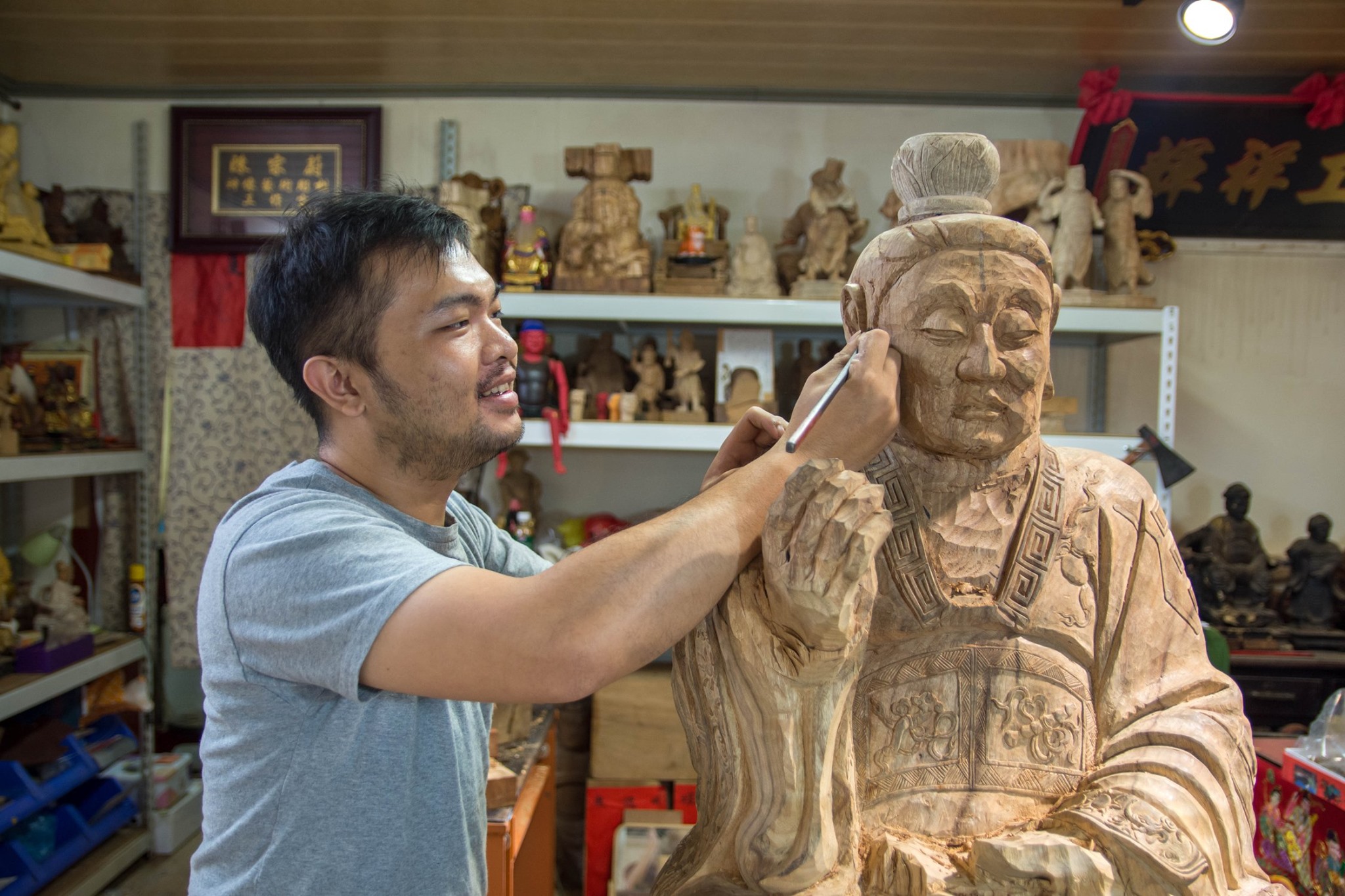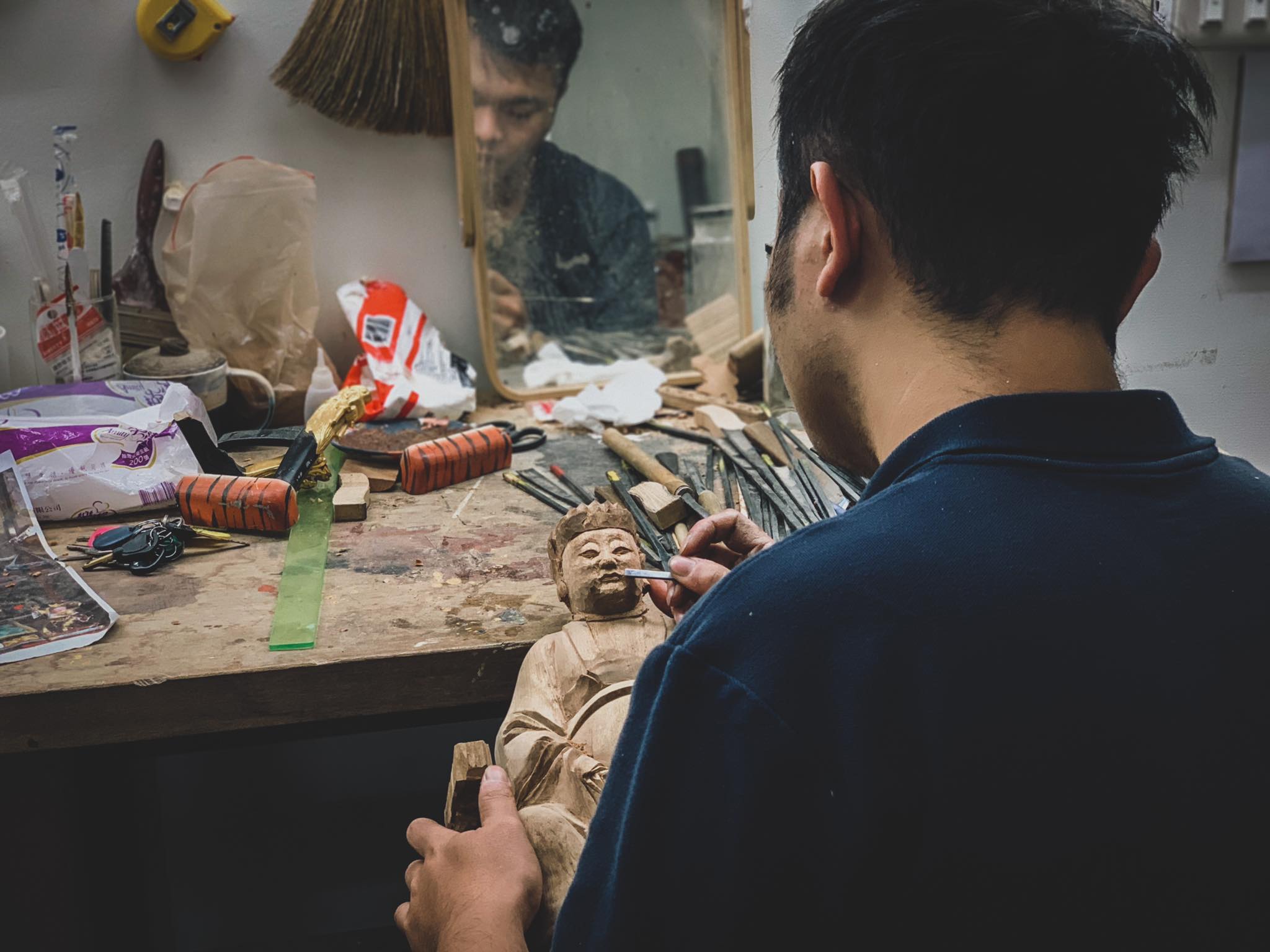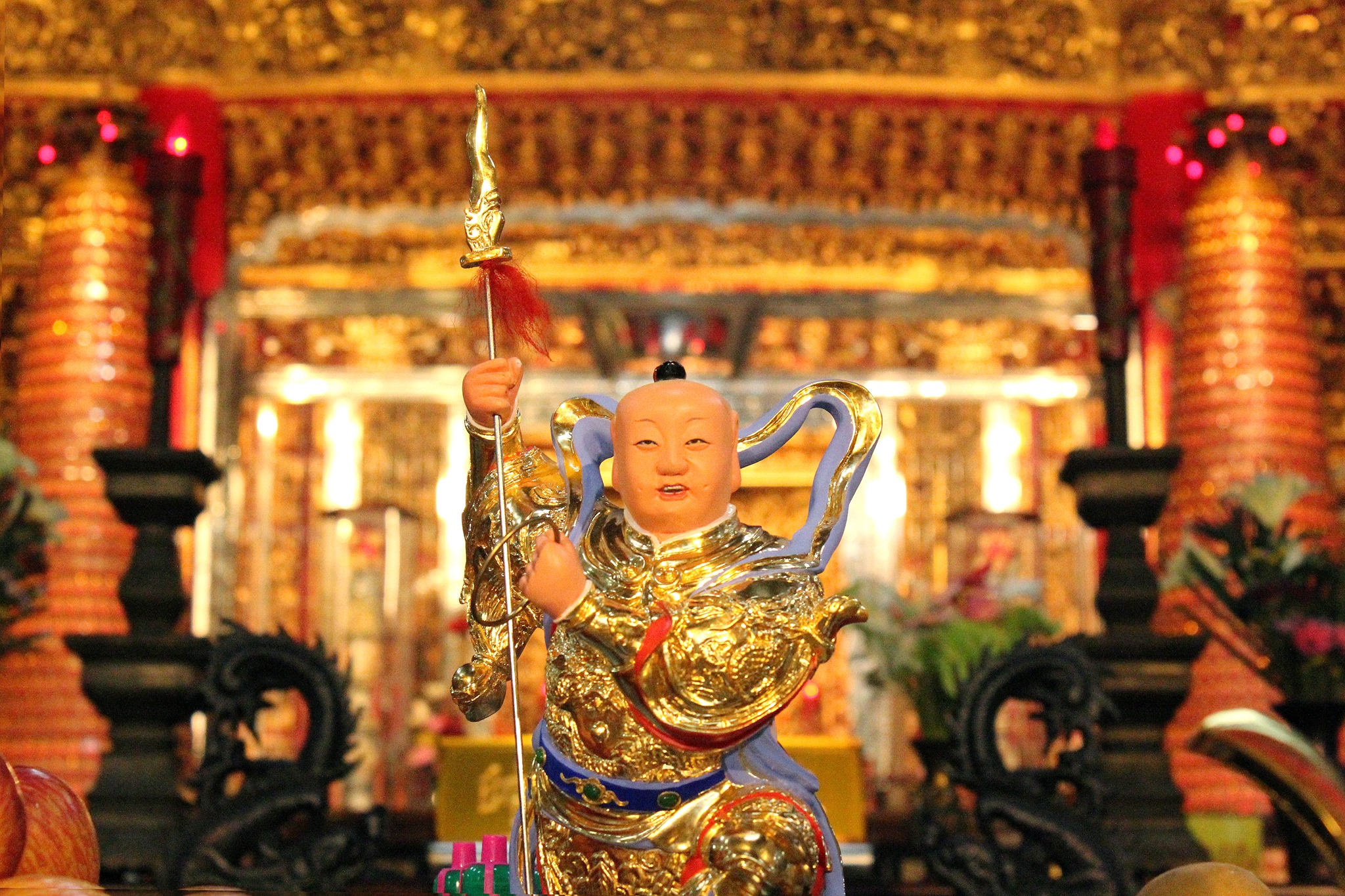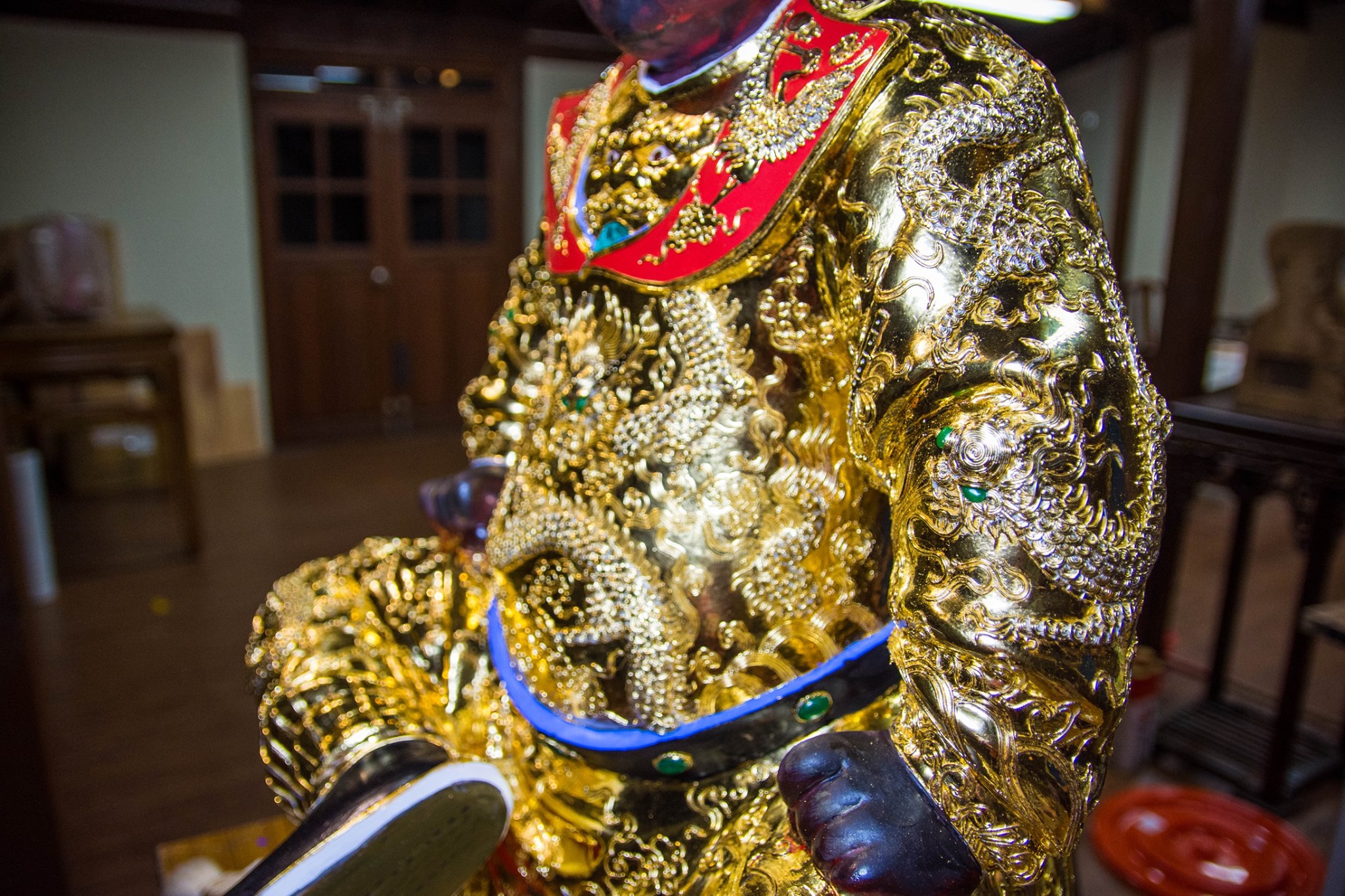When Heaven Meets Earth (2023): Experiencing Taiwan’s Sacred Statues
Overview
In Fall 2023, the Nealis Program in Asian Studies invited to Saint Joseph’s University a prominent statue carver from Taiwan’s northwestern city of Lukang, Chen Zongwei 陳宗蔚, to stay on our Hawk Hill Campus for two weeks as artist-in-residence. When home in Taiwan, Chen makes sacred statues of Buddhist, Daoist, and popular gods for temple and domestic altars. During his time on our campus, Chen and two of his assistants, Huang Yusheng 黃裕盛 and Wu Shuming 吳書銘, held a special three-part event, comprising:
1) a gallery exhibition, 2) an open studio, and 3) community workshops.

Gallery Exhibition
First-Floor Gallery of Boland Hall
Our campus was able to experience nine of Taiwan’s sacred statues, all of them carved in recent years by Chen Zongwei, during his visit from Taiwan. Chen received permission from the gods to borrow these statues from their temple and domestic altars and bring them to our campus. From October 23 to November 3, 2023, these sacred statues resided in the first-floor gallery space in Boland Hall for two full weeks.
Open Studio Times
Fine Arts East 201
During their stay on Hawk Hill, Chen and his two assistants help studio times in Fine Arts East 201. They made a single statue from start to finish, from an un-carved block of wood to a gilded and painted statue of Prince Nezha the Third Prince, one of Taiwan’s most popular gods. At specific points during the statue’s development, Chen performed traditional ceremonies to bless and protect the statue, and to transform it from an aesthetic object to a sacred image.

Traditional Ceremonies
Fine Arts East
As part of the Open Studio, Chen invited the campus community to observe him perform three traditional ceremonies that punctuate his artistic process any time he makes a new statue.
Kaifu Ceremony (Opening with the Hatchet)
Kaifu means “to open with a hatchet.” It’s the first in a traditional series of three ceremonies that punctuate the production of a new statue. This first ceremony marks the opening announcement to the gods, letting them know that he’ll soon start making a new statue. Chen used a traditional carver’s hatchet to perform several symbolic gestures, touching the hatchet to the un-carved block of camphor wood. He offered incense, recited spoken invocations, and used talismans, as he conveyed his intention to make a new statue of Nezha the Third Prince, Prime Marshal of the Central Altar.
Rushen Ceremony (Embedding the Spirit) | Friday, 10/27 at 11:15 a.m.
Rushen means “to embed the spirit.” It’s the second in a traditional series of three ceremonies that punctuate the production of a new statue. Carvers usually perform this ritual after they have carved most of the statue but before they start to paint the statue’s exterior. This second ceremony potentiates the statue. It affirms its potential to bind to the divine presence of the deity whom the statue will represent, Nezha the Third Prince. For this special ceremony, Chen brought with him from Taiwan sets of materials which he installed inside the statue’s interior. These materials include the Seeds of the Five Grains, the Seven Treasures (small pieces of stone, gem, and metal), a Thread of Five Colors, and incense ash from the oldest Nezha temple in Taiwan, the Palace of the Transforming Dragon in Kaohsiung. Chen announced the ritual to the gods, used talismans to purify the statue, consecrated and installed the sets of materials, and used another talisman to seal and protect the statue.
Kaiguang Ceremony (Opening the Radiance) | Friday, 11/3 at 1:50 p.m.
Kaiguang means “to open the radiance.” It’s the third and final ceremony in a traditional series of three ceremonies that punctuate the production of a new statue. Carvers perform this ceremony after the statue reaches completion, when it’s carved, gilded, and painted. The ceremony aims to activate the statue, to bless it, to give it life, to actualize its connection to Nezha the Third Prince, the god whom the statue represents. To perform this ceremony, Chen used a talismanic mirror to shine light from the sun into the statue’s face, “opening its radiance.” He used a writing brush and vermillion ink to dot its eyes and mark several other vital points on the statue’s face and body. He recited incantations and used talismans to purify and protect the statue.

Community Workshops
Fine Arts East
In the first week of When Heaven Meets Earth (October 23–27), Chen and his assistants taught the first section of a two-part workshop, Workshop 1: Lacquer Thread. In this workshop, participants learned how to create a foundational design with lacquer thread. Each participant received a small, thin piece of wood cut in the shape of an upper garment, similar to the clothing of a paper doll. On the surface of these simple wooden cut-out garments, participants made a base design:
In the second week of When Heaven Meets Earth (October 30 – November 3), Chen and his assistants taught the second section of the two-part workshop, Workshop 2: Gold and Color. In this second workshop, participants continued to work with the wooden cut-out garment that they started the previous week, learning to apply over the base design gold leaf and color pigments:

At the close of the two workshops, participants took home as keepsakes their cut out garments, now adorned with lacquer thread, gold leaf, and color.